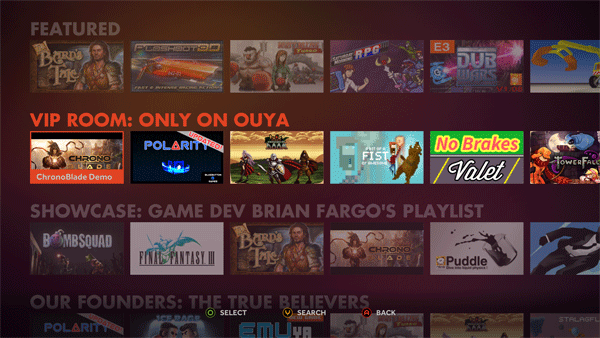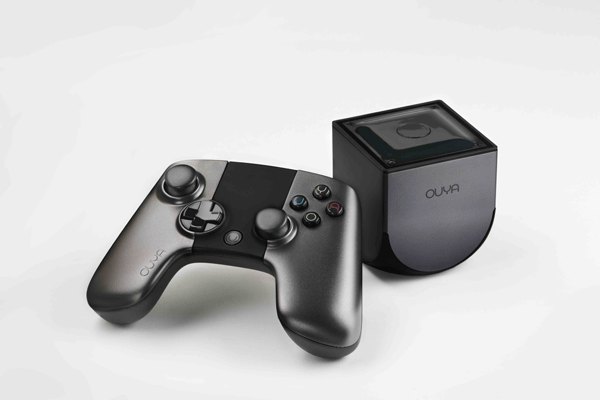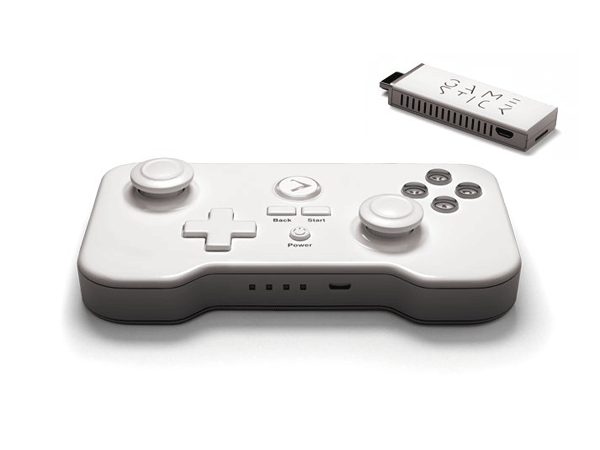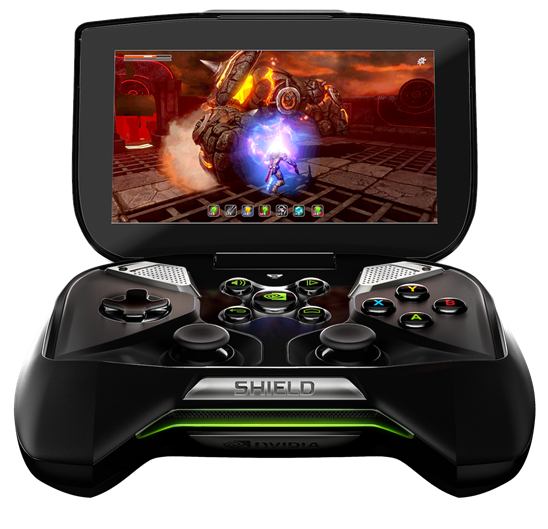As more and more people move to smartphones and tablets, there has been an explosion in gaming on these devices. This has put both Sony and Nintendo in some trouble for their dedicated mobile gaming devices. Android is the primary operating system and now a number of companies have put together mini-consoles that are based around the operating system to provide inexpensive and accessible gaming. This article takes a look at a few of the devices available now or coming soon.
OUYA
The OUYA was the first really big Android based gaming console to hit the market thanks to its extremely successful Kickstarter campaign. For just $99, the system is a small cube that plugs into an HDTV to house the mini-Android PC plus it comes with a wireless controller. Hardware wise, it is essentially a stripped down tablet or cellphone. It is based around the NVIDIA Tegra 3 quad core processor with GeForce graphic. This is pretty dated now but does mean that it is tested and quite capably for Android gaming.Storage capacity is always a major issue when it comes to tablets and smartphones. Some of the more advanced games can take over a gigabyte in size. With the OUYA’s 8GB of internal storage, it could be eaten up quite quickly. Thankfully there are two USB 2.0 ports on the back side for use with inexpensive thumb drives for quick data expansion.
One unique aspect of the OUYA compared to other Android platforms is their marketplace. Every title that is available on it can be downloaded and tried out for free. Be warned though, in many cases the content may be extremely limited without additional in-game purchases or by unlocking more of the game through a single purchase. Another issue here is that the OUYA interface does not readily display the costs.
To try and combat the ubiquitous nature of the Android games that can be found for just about any device, the makers of the OUYA developed the campaign to basically provide matching crowd sourced funding to developers that elect to make the titles exclusive to the OUYA platform for a period of six months. The program has encountered some major problems with and the withdrawal of several titles from the program as a result.
For a list of currently supported titles for the OUYA, check out which sorts them out by popularity, genre and lists upcoming games.
GameStick
Like the OUYA, the system is based around a ARM processor but this one will not be from NVIDIA as it will be using the MALI 400 graphics solution. Storage will also be an issue as there is just 8GB of memory but the controller does feature a microSD card slot on it that is compatible with cards up to 32GB. There is also going to be a (priced at $50) peripheral that allows for two full size USB 2.0 ports for peripherals such as keyboards, mice or storage, an Ethernet port if wireless isn’t available and a full size SD slot to support up to 64GB cards. Of course, the GameStick and GameStick Dock will come out to be around $130 combined which makes it slightly more expensive than the OUYA if you need Ethernet or improved USB peripheral support.
Since the product has not launched yet, much isn’t known about its storefront features and capabilities. They do have a page that lists some of the expected titles. There is mention from the company that there will be full parental controls but it isn’t known if this is custom to GameSticks design or uses the new Android 4.3 controls.
NVIDIA SHIELD
NVIDIA’s approach is much different than the other two companies when it comes to their Android based gaming device. Rather than trying to hook in the casual gaming, they went after the serious gaming that doesn’t mind spending a bit more. After all, the SHIELD ends up costing $400 which is four times more than the competition here, but it is also a mobile gaming device rather than a dedicated mini gaming console.The device itself almost looks like an overgrown console control. The reason for this is that it has to fit its battery pack, processor, storage, speakers, various connectors and a 5-inch touchscreen with 1280×720 display. This means that it is completely self contained and does not have to be plugged into a TV to use but it is still quite large compared to say a Nintendo 3DS or Playstation Vita. The screen is about the size of a larger cell phone but the controller allows it to play games quite well. The one downside is that it really is designed for games design played in the widescreen mode. Those that rely on the tall screen orientation can be difficult to play.
Just like the other two, the SHIELD is based around an ARM based processor but a newer NVIDIA Tegra 4 quad core processor with improved GeForce GPU. This means it has a lot more processing power and graphics capabilities. The graphics in the Android based games are going to be much closer to the current generation consoles such as the XBOX 360 and Playstation 3. The downside here is that the majority of Android games are still developed with a more casual player in mind and with much less intense graphics and processing power capabilities.
What really sets the SHIELD apart though is its ability to be used in conjunction with PC gaming. If you have a PC equipped with an NVIDIA GeForce GTX 650 graphics card and a high speed wireless network for connectivity, then the device can be used as a remote streaming platform for a including Borderlands 2, Bioshock: Infinite, Skyrim and Batman: Arkham City. The process for supported titles does seem to work pretty well with a few hiccups from time to time but this feature is still technically in beta.
Of course the cost is the primary issue with the SHIELD. It far more expensive than a Nintendo 3DS and still a bit more expensive than a Playstation Vita. Add to this a limited selection of games and its biggest feature still being in beta and it really is a device for those who want to be on the leading edge of technology and don’t mind if it doesn’t really catch on.





Pingback: Vavle's SteamOS and Steam Machine To Make PC's Game Consoles | Tech for Anyone
Pingback: NVIDIA Shield Tablet - Third Time a Charm? | Tech for Anyone